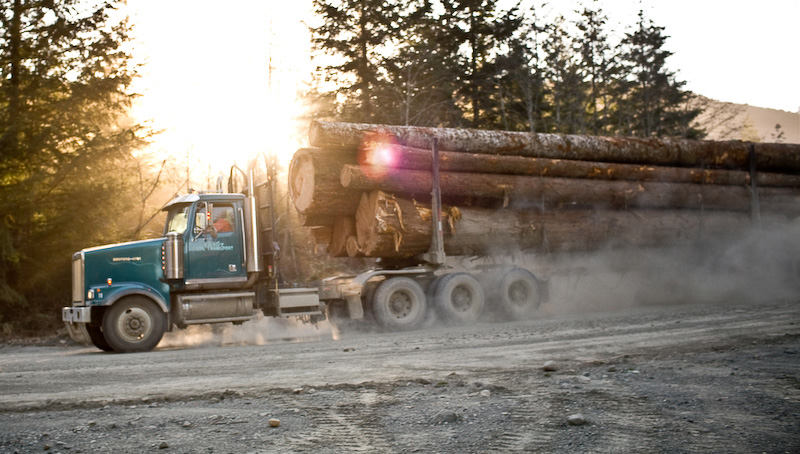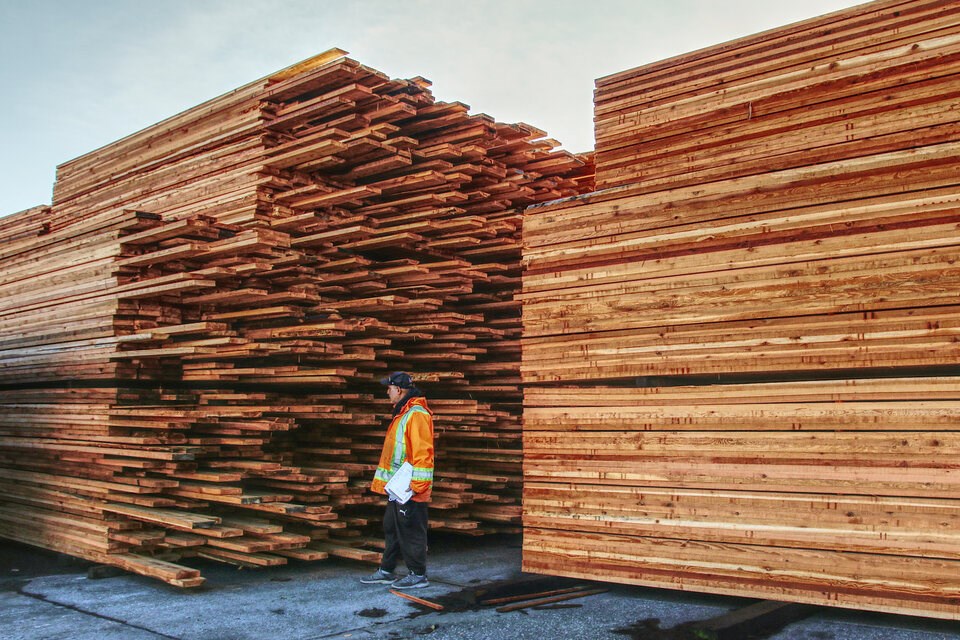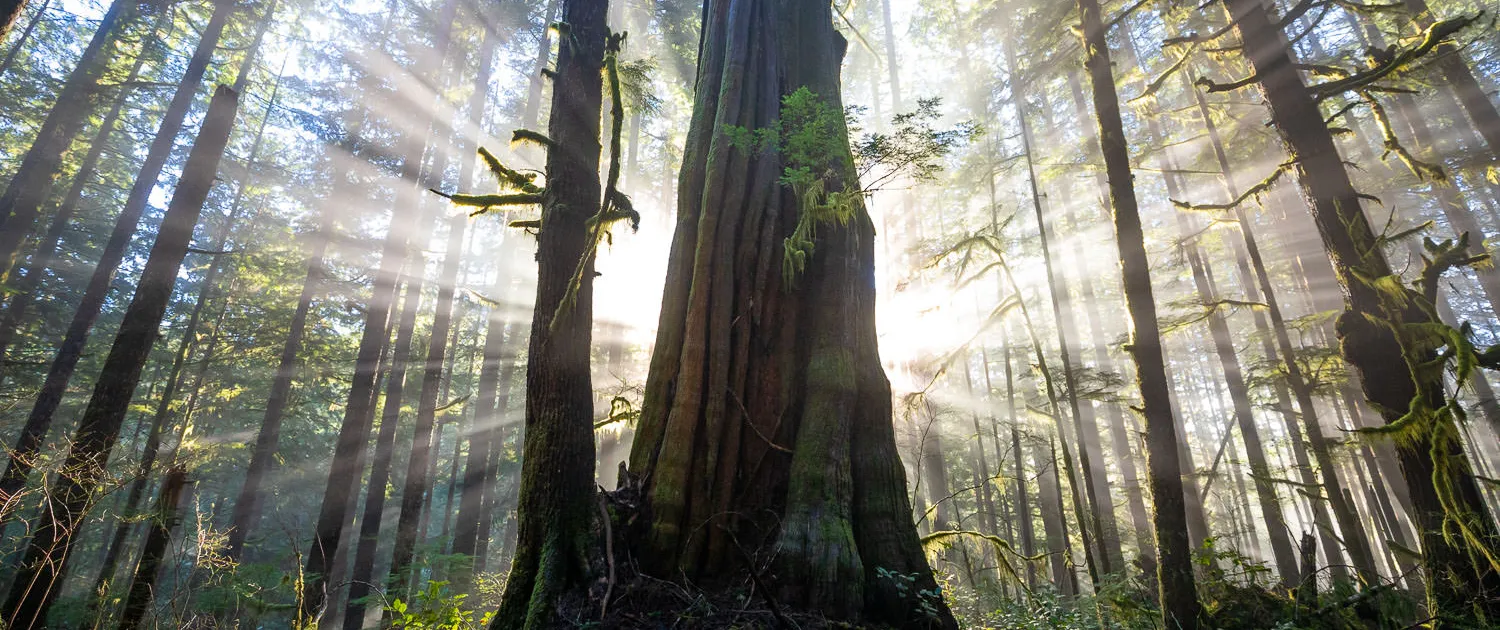 Jun 26 2012
Jun 26 2012B.C. warned not to touch reserves for short-term supply
When a special committee of the provincial legislature came to the Interior town of Valemount last week seeking views on how to maintain timber harvests in forests decimated by the pine beetle, it reopened some old wounds for Valemount Mayor Andru McCracken.
A decade ago, Valemount was a thriving forestry town with a large sawmill. There was a district forestry office at nearby McBride, employing 25 people, which oversaw the timber supply in the Robson Valley Forest District.
The district office closed in 2003 as part of a provincewide cutback of government services. The sawmill closed and was dismantled in 2006 after a legislative change removed the requirement that timber be processed locally. Most Robson Valley timber now goes to a mill 300 kilometres away in Prince George.
The Robson Valley’s largely hemlock and cedar forests have not been hit hard by the pine beetle. But timber in the dead forests to the west of Valemount is drying and cracking to the point it can no longer be turned into lumber.
To access more timber, the B.C. government is floating a plan that includes logging in areas that were previously off limits for environmental or “visual quality objectives” and changing the boundaries of forest districts to add timber to one district at the expense of another.
Victoria has already announced plans to ease logging restrictions in the Fraser timber supply area, including upper Stave Lake, upper Harrison Lake and Chehalis Lake.
McCracken is concerned that Valemount will lose control over what timber it has left.
The special committee, struck on May 16, is travelling across the Interior seeking public consultation until July 12 and is to submit a report with recommendations Aug. 15. Nechako Lakes MLA John Rustad is the chair.
Rustad said people speaking at the hearings have been passionate in their views.
“When we are in Burns Lake [which lost its mill in a fire Jan. 21] we are hearing, ‘We want to have our mill rebuilt,’ and in a lot of other communities we are hearing, ‘Whatever you do, don’t put our mills at risk.’ This is a very serious issue across the entire mountain pine beetleimpacted area,” he said.
The plan to take a second look at the remaining timber supply, came about shortly after it was discovered there is not enough timber in the Burns Lake area to warrant rebuilding the sawmill. The government wants to drum up enough timber through other means to save Burns Lake and, by extension, other resource towns also faced with dwindling timber supplies for their mills.
The beetle has destroyed 10 million cubic metres of timber.
“To put that in perspective that’s enough wood to feed eight fairly sizable sawmills. And eight sawmills represents about a third of the forest industry throughout that area,” said Rustad.
Besides logging in forest reserves and changing administrative boundaries, the committee is considering: . Increasing the harvest of marginally economic timber.
. Shifting to area-based tenures giving forest companies more management control over the land.
. More intensive forest management through fertilization and silviculture.
McCracken is flattered that the government wants his opinion but he thinks it’s a bit late to be asking. And he is concerned that the province may end up taking even more timber from the Robson Valley to feed beetleaffected mills to the West.
“We are in a colonial situation,” he said.
McCracken isn’t the only one concerned.
The Association of B.C. Professional Foresters, environmentalists and even the forest industry and the University of B.C. dean of forestry have expressed concerns, specifically over the second look at forest lands that are set aside for ecological reasons.
“The message we want out there is: ‘We are not going to damage our environmental standards,” said John Allan, president of the Council of Forest Industries, which intends to submit a brief. “I am struggling with how you would free up anything more than a few scraps of timber without doing environmental damage.”
Allan said the effect of the beetle is a critical problem that deserves a broader and deeper examination than the committee can accomplish with its tour. The economic future of the forest industry is at stake, he said.
“This issue is so important it calls for more than a few meetings in the middle of summer.”
The 5,400 members of the Association of B.C. Forest Professionals are urging that the government put the forests first.
The forests are the province’s most valuable renewable resource, said Mike Larock, who is travelling to towns along with the committee. He said the professional association fears sustainability may be damaged for political expediency.
“We think that just by focusing on one end product, or one benefit, you actually lose sight of the forest, the very thing that provides all the benefits,” he said.
John Innes, dean of the faculty of forestry at the University of B.C., said that the mills running out of timber will be able to gain a short-term timber supply if reserves are logged but it could be at the expense of sustainable forests.
“What people seem to forget – and I don’t really understand this – is that there was extra capacity created to process this lumber when the beetle reached its peak. Surely people then realized that this was a temporary thing; that it wasn’t going to last.”
Because of the risks of going into the reserves, the outcomes for industry and the environment are uncertain, he said.
“We have never had such proposals for what, in my view, are a pretty regressive step in forest management.”
Vancouver Sun Article: https://www.vancouversun.com/technology/warned+touch+reserves+short+term+supply/6840692/story.html#ixzz1yvXxjait






